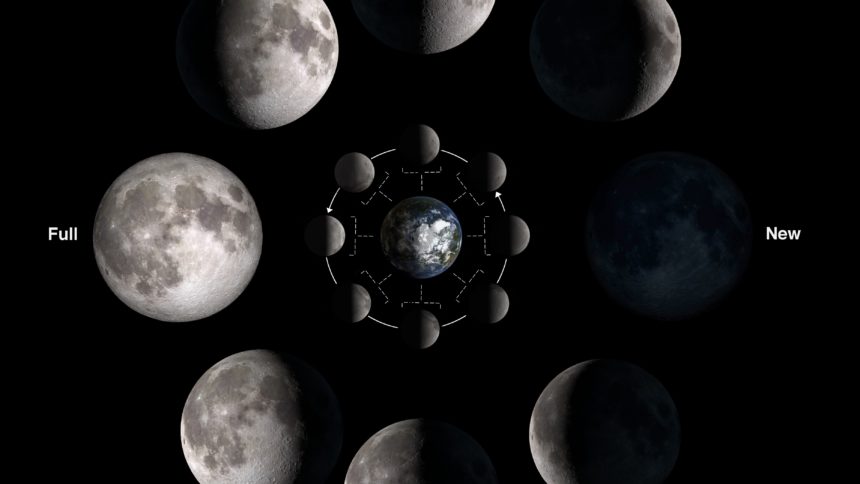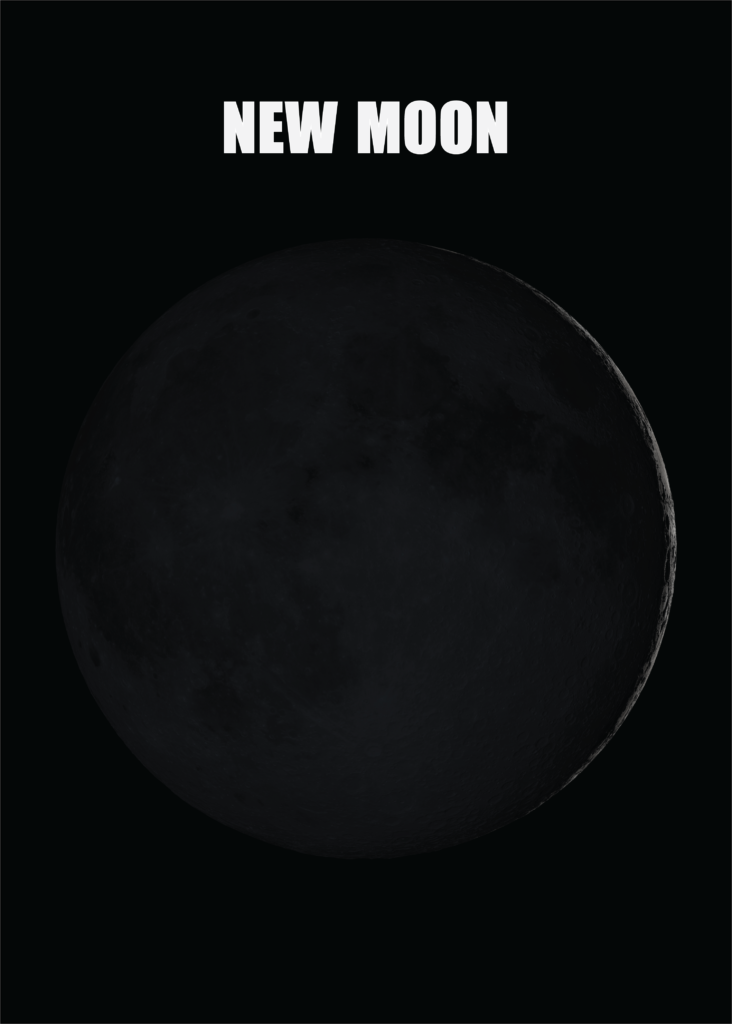
New Moon: The New Moon is the first phase in the cycle of phases. This Moon phase occurs once a month, immediately after the Waning Crescent Phase, rising around 6 AM, and setting around 6 PM, almost instantaneously becoming a Waxing Crescent. The reason this phase is called the New Moon is that it is the first phase in the lunar cycle, and marks a “new” cycle of phases. The alignment of the Earth, Moon, and Sun leaves the side of the Moon facing Earth in total darkness to our view, as the Moon does not produce its own light. This phase also has one of the strongest effects on the Earth’s tides because of the Sun and the Moon’s gravitational pull. This causes the tides to be at their highest high points and their lowest low points. This is also known as spring tide when the oceans have the highest “swell”.
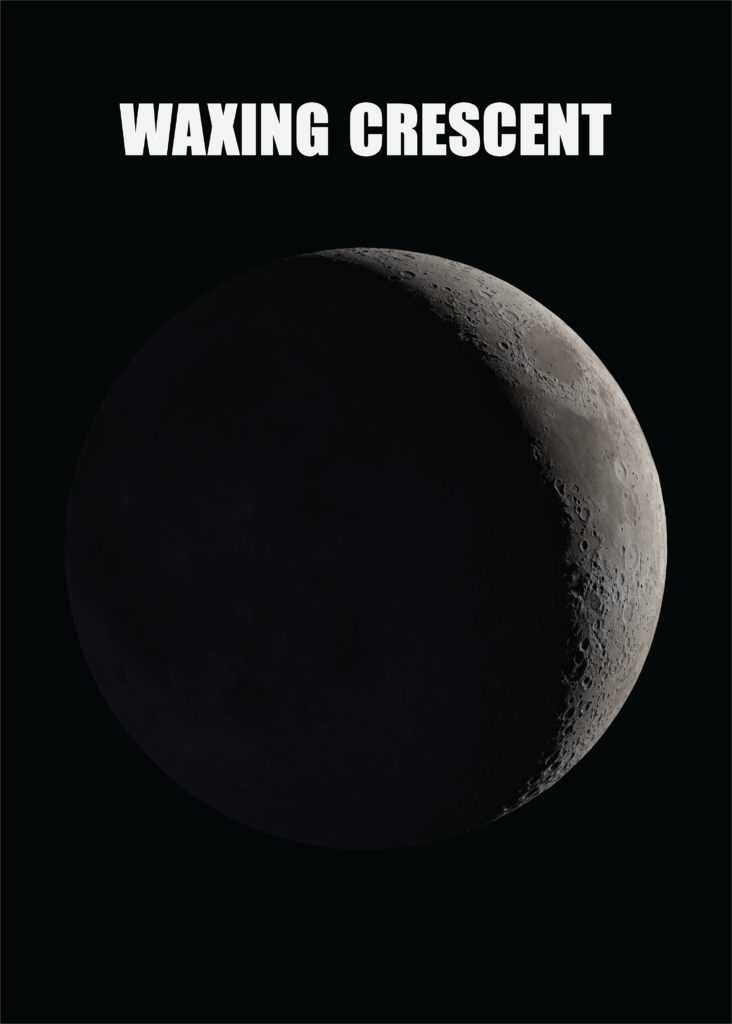
Waxing Crescent: The Waxing Crescent is the second phase in the cycle of phases. This Moon phase occurs once a month, rising around 9 AM, and setting around 9 PM, sticking around for approximately 7.38 days before going into the First Quarter phase. This phase is called the Waxing Crescent because the area illuminated on the surface of the Moon makes the shape of a crescent, and the term waxing means increasing. This phase is one step in the cycle away from the First Quarter phase, so the angle of the Earth, Moon, and Sun is almost perpendicular. This means that the Sun and Moon’s gravitational pulls on the tides cancel each other out, decreasing the amount of tidal pull. The Earth’s tides at this point are decreasing, almost at neap tide.
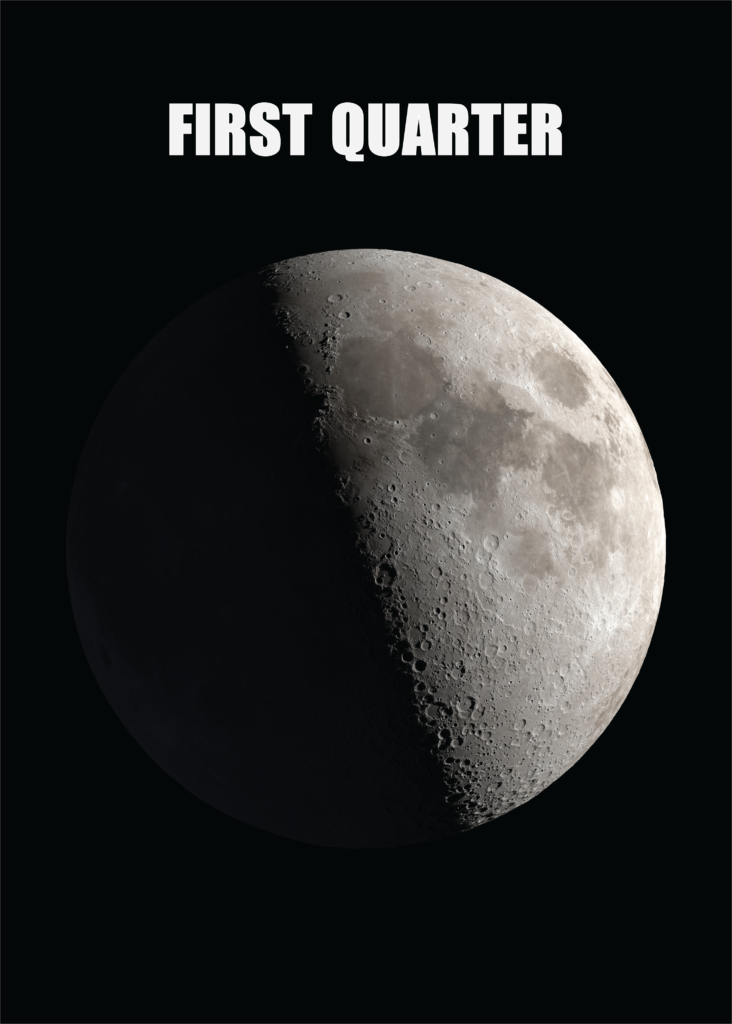
First Quarter: The First Quarter, or Half Moon, is the third phase in the cycle of phases. This Moon phase occurs once a month, rising around 12 PM, and setting around 12 AM, almost instantaneously becoming a Waxing Crescent. The reason this phase is called the First Quarter is that the Moon has completed 1/4 of its orbit around the Earth. This phase of the Moon is also known as a Half Moon because only half of the Moon is visible. Because the Earth, Moon, & Sun are at a right angle instead of a straight line, and the Moon and Sun pull in different directions, the First Quarter phase has the smallest effect on the ocean’s tides. This lack of tidal bulge is known as a neap tide. In most parts of the world, especially the northern hemisphere, this phase rises in the middle of the day, setting in the middle of the night.
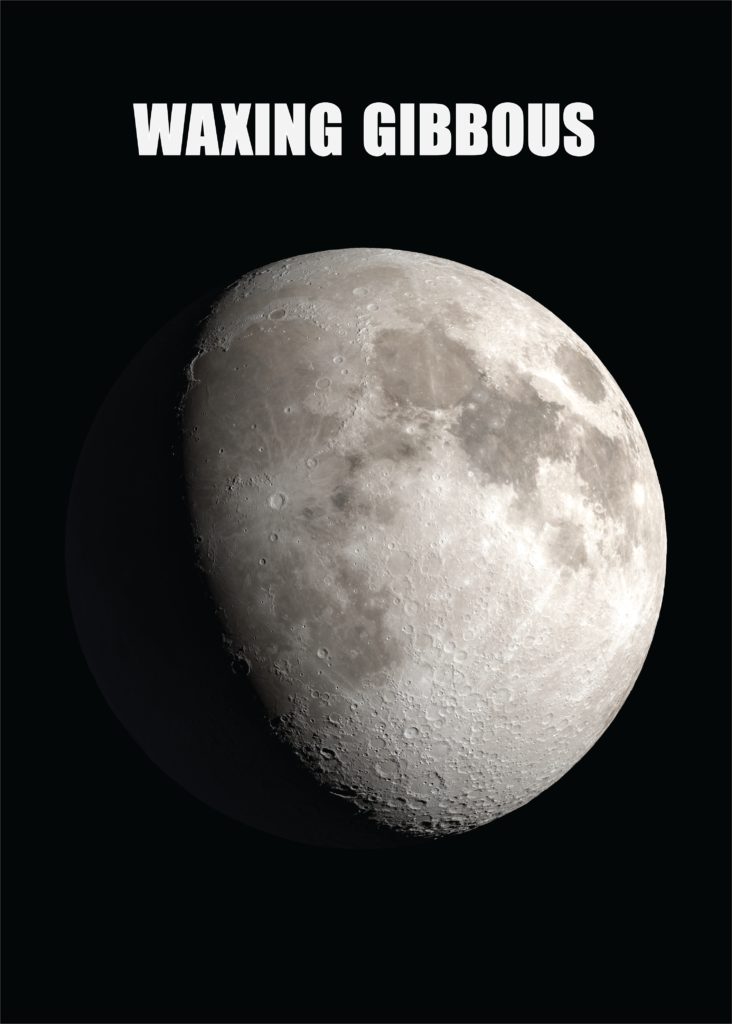
Waxing Gibbous: The Waxing Gibbous is the fourth phase in the cycle of phases. This Moon phase occurs once a month, rising around 3 pm, and setting around 3 am, sticking around for approximately 7.38 days before going into the Full Moon phase. The term waxing means increasing, and the term gibbous means “humped-back.” Therefore, this phase is called Waxing Gibbous because the surface area of the Moon that you see is increasing and the shape of the lit-up part of the Moon looks like a hump-back. This phase is one step in the cycle away from the Full Moon phase, where the Sun, Earth, and Moon are in a straight line. As this phase is nearing, the Sun and Moon’s gravitational pull causes the bulge size of Earth’s tides to increase. This means that they are about to reach their maximum at spring tide.
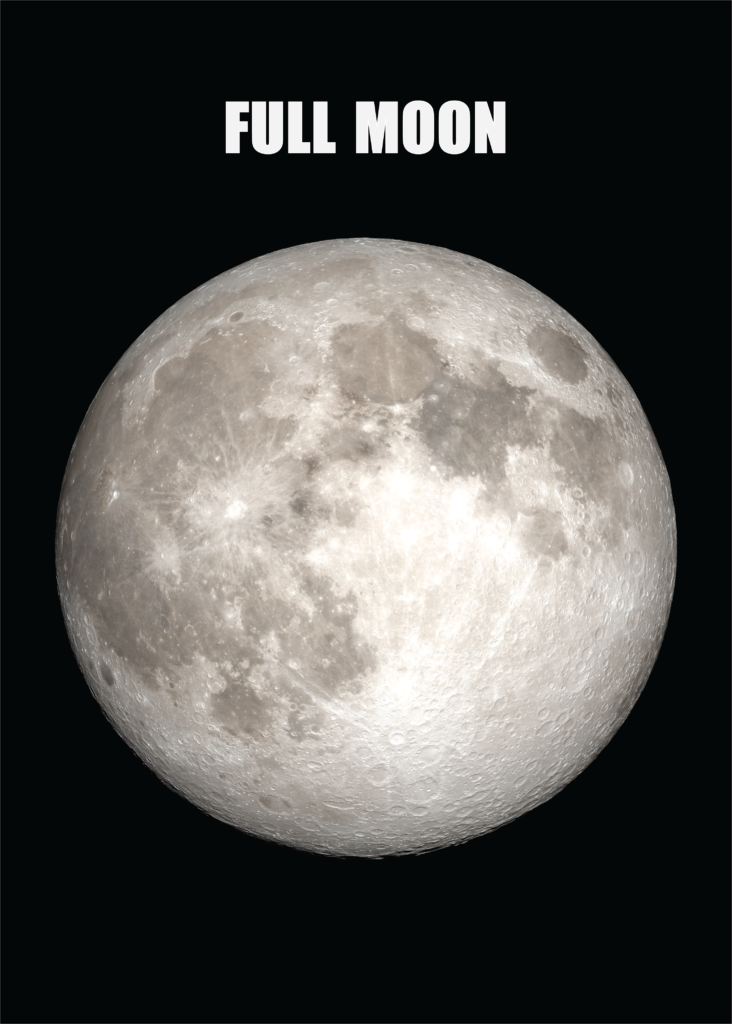
Full Moon: The Full Moon is the fifth phase in the cycle of phases. This Moon phase occurs once a month, rising around 6 pm, and setting around 6 am, almost instantaneously becoming a Waning Gibbous. At this point in the cycle, the Earth, Moon, and Sun are in a straight line in relation to each other, causing the surface of the Moon to be fully illuminated from our view on Earth. This is why it’s also called a Full Moon because all of the Moon’s surface is visible. This phase also has one of the strongest effects on the Earth’s tides because of the Sun and the Moon’s gravitational pull. This causes the tides to be at their highest high points and their lowest low points. This is also known as spring tide when the oceans have the highest “swell”.
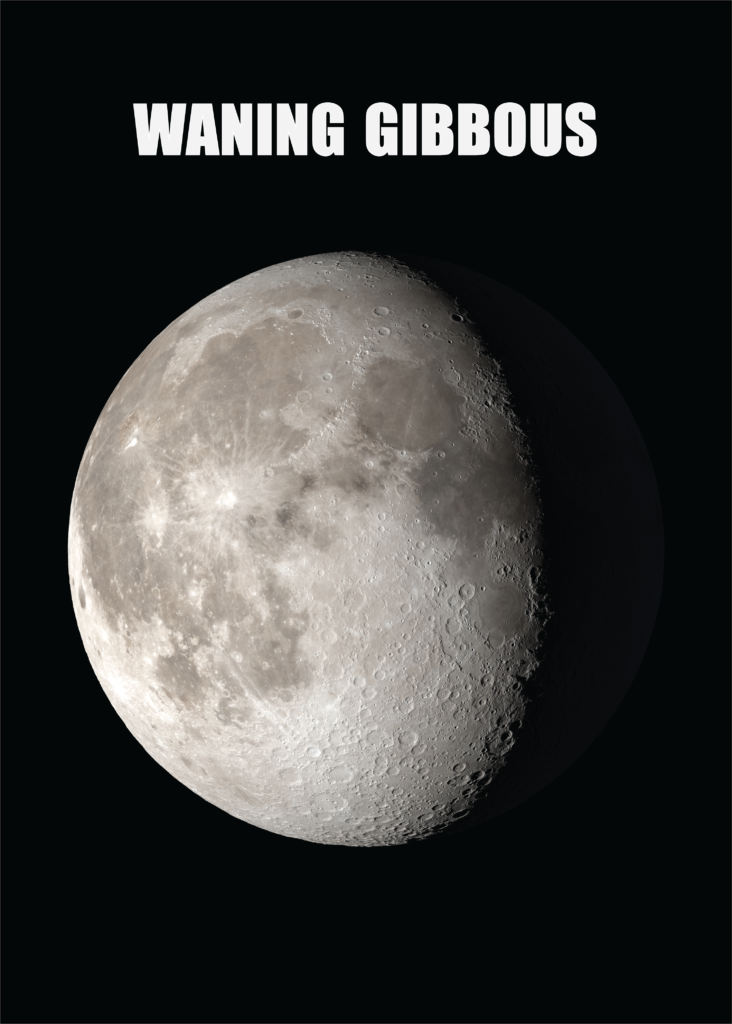
Waning Gibbous: The Waning Gibbous is the sixth phase in the cycle of phases. This Moon phase occurs once a month, rising around 9 PM, and setting around 9 AM, sticking around for approximately 7.38 days before going into the Third Quarter phase. The term waning means decreasing, and the term gibbous means “humped-back.” Therefore, this phase is called Waning Gibbous because the surface area of the Moon that you see is decreasing and the shape of the lit-up part of the Moon looks like a hump-back. This phase is one step in the cycle away from the Third Quarter, so the angle of the Earth, Moon, and Sun is almost perpendicular. This means that the Sun and Moon’s gravitational pulls on the tides cancel each other out, decreasing the amount of tidal pull. The Earth’s tides at this point are decreasing, almost at neap tide.
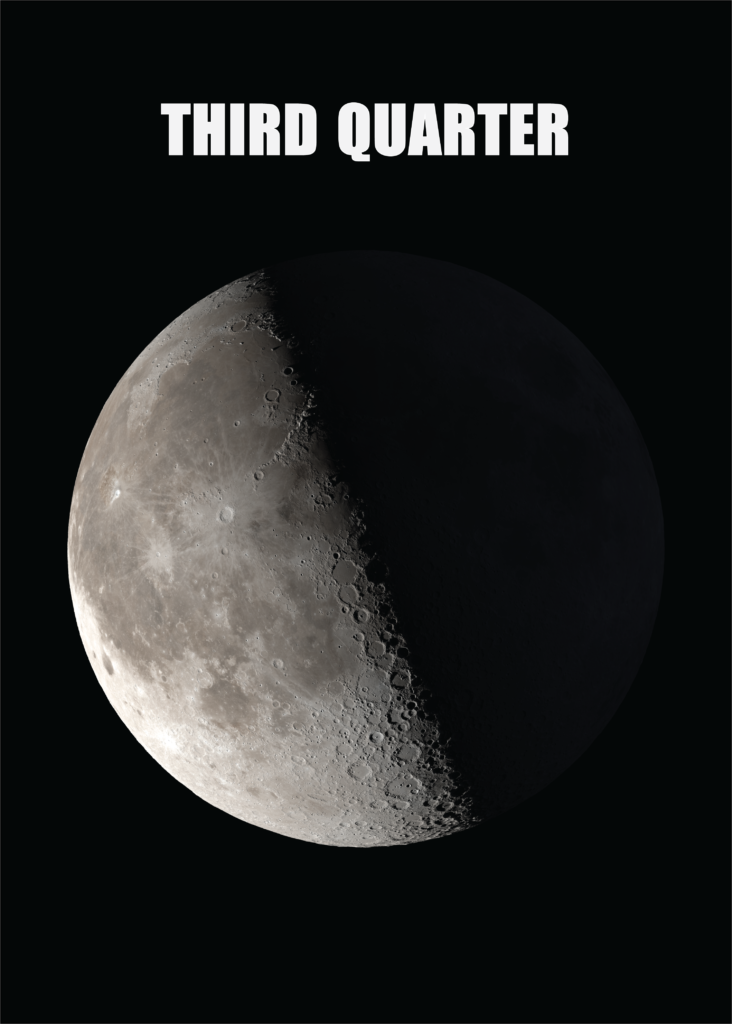
Third Quarter: The Third Quarter, or Half Moon, is the seventh phase in the cycle of phases. This Moon phase occurs once a month, rising around 12 AM, and setting around 12 PM, almost instantaneously becoming a Waning Crescent. The reason this phase is called the Third Quarter is that the Moon has completed 3/4 of its orbit around the Earth. This phase of the Moon is also known as a Half Moon because only half of the Moon is visible. Because the Earth, Moon, & Sun are at a right angle instead of a straight line, and the Moon and Sun pull in different directions, the Third Quarter phase has the smallest effect on the ocean’s tides. This lack of tidal bulge is known as a neap tide. In most parts of the world, this phase rises in the middle of the day, setting in the middle of the night.
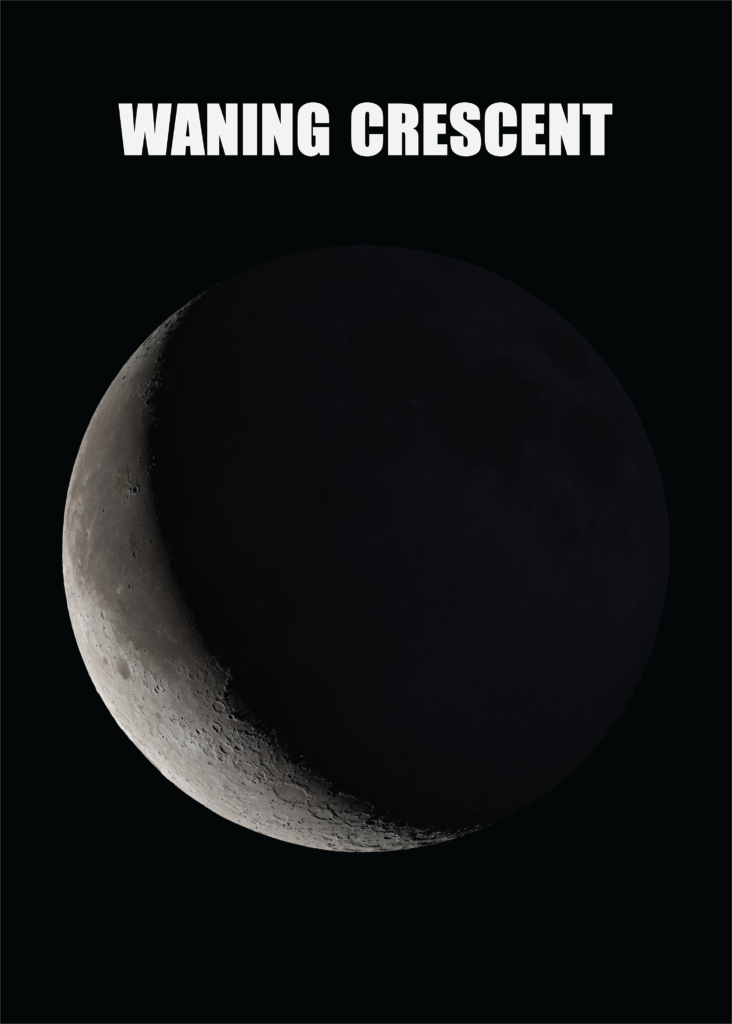
Waning Crescent: The Waning Crescent is the eighth and final phase in the cycle of phases. This Moon phase occurs once a month, rising around 3 AM, and setting around 3 PM, sticking around for approximately 7.38 days before going into the New Moon phase. The area illuminated on the surface of the Moon during this phase is in the shape of a crescent and the amount of sunlight reflecting off of the Moon is decreasing. The term waning means decreasing, which is why this Moon phase is called Waning Crescent. This phase is one step in the cycle away from the New Moon phase, where the Earth, Moon, and Sun are in a straight line. As this phase is nearing, the Sun and Moon’s gravitational pull causes the bulge size of Earth’s tides to increase. This means that they are about to reach their maximum at spring tide.
These metal signs displaying the phases of the moon, along with the information provided on this website, is the Eagle Scout Project of Anthony Dudinyak. Kopernik would like to thank him, as well as the following volunteers:
David Dudinyak, Lisa Dudinyak, Joshua Dudinyak, Lorena Iosub, Jack Miller, Steve Miller, Michael Finch, Steve Finch, Michael Tait, Mike Tait, Gavin Kretzmer, Walaya Kretzmer, Jason Kretzmer, Maverick Berne, Rob Berne, Tanner Rose, Ann Rose, Benjamin Trelease, and Mike Willis.

A Note from Anthony:
Thank you for coming and visiting Kopernik today! I hope that you enjoyed learning more about the moon and how it affects the oceans’ tides, as well as the rest of the Science Park. I would like to thank everyone that helped make this Eagle Project become a reality, as well as the director of Kopernik, Drew Deskur, for giving me this wonderful opportunity. I hope that you learned something today from my Eagle project, and I hope it will continue to educate young minds like yours for decades to come.


